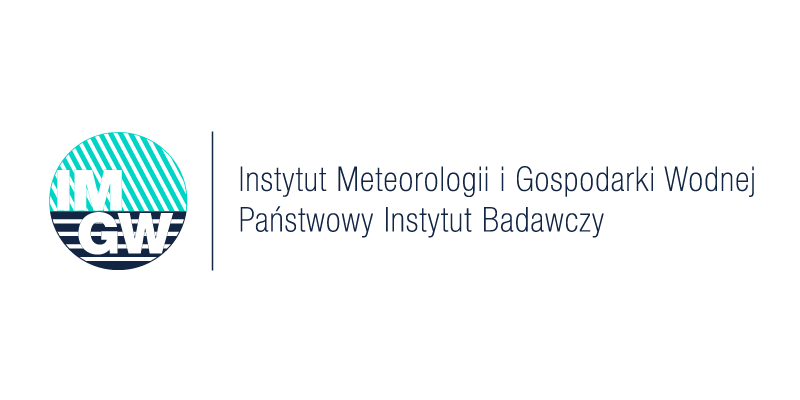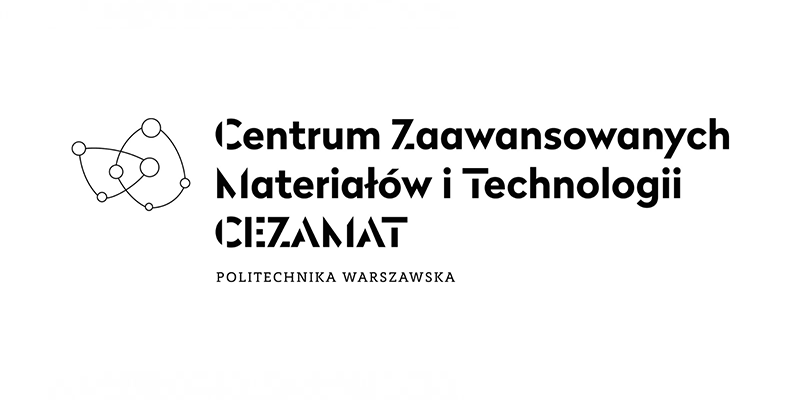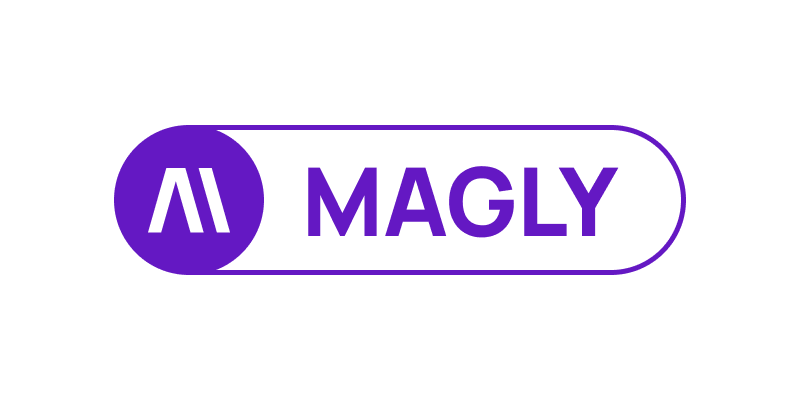IoT System for Water Quality Management
We work with Warsaw Institute of Meteorology and Water Management (IMGW-PIB), Centre for Advanced Materials and Technology (CEZAMAT-WUT) and Nebucode on developing autonomous Internet of Things (IOT) system for operational support in identifying threats to the state of rivers.
Challenge
The demand for water in good quantity and quality is crucial for the functioning of both social and ecological systems. Increased human pressure on the environment is an incentive to conduct continuous monitoring of phenomena occurring in water environments in order to take long-term measures to prevent the degradation of ecosystems and crisis measures to limit the effects of catastrophic events.
Solution
A comprehensive system for identifying threats to the state of rivers based on Internet of Things (IoT) solutions with the use of autonomous measuring stations.
Project value
28 474 295,93 PLN
About the Project "Feel the Energy"
Pitch from Carpathian StartUp Fest 2024 — Filip Budny, CEO & Founder of MAGLY is presenting Water Sense project.

Water Sense Project is also a Winner of the IDEA CHALLENGE Competition at Carpathian Startup Fest 2024.
Want to be a part of Water Sense Project?
We are Looking for:
- Electronic Engineers
- Constructor Engineers
More Information about the Project
The goal of the project is to develop and introduce to the market an innovative the ASIR – Autonomous Internet of Things (IoT) System for Water Quality Monitoring and Operational Support for Threat Identification adapted to river environment conditions, operating continuously. The ASIR will signal current hazards to ecosystems and predict potential environmental impacts, enabling appropriate and early action. The ASIR integrates three components that are innovative on a global scale:
(1) Autonomous Measurement Station – monitoring 10 key physicochemical water parameters such as: pH, chlorides, nitrates(V), ammonium ions, orthophosphates(V), conductivity, oxygen, temperature, flow velocity, depth. Seven of these will be measured using the applicant patent pending system (P.446260), with a roller system module equipped with several hundred disposable and inexpensive miniature sensors that do not require calibration or cleaning. After a sensor loses its analytical parameters, it is automatically replaced with a new one. The continuity of operation for 365 days a year is ensured by a micro-hydroelectric generator powered by flowing water and the heating of electronic systems for stable operation in winter conditions.
(2) Smart Cloud-based Management System for Measurement Stations – a platform for monitoring, managing, and analyzing data equipped with AI modules that identify anomalies and predict water parameter values 72 hours in advance. (3) Interactive National River Pollution Risk Map – an innovative tool supporting the selection of an optimal measurement plan and the appropriate placement of measurement stations in the research area.
The project will be carried out by an interdisciplinary consortium experienced in the field of printed electronics, sensors, hydrology, IoT and IT consisting of WUT – Leader, IMGW-PIB and companies MAGLY and NEBUCODE. The commercialization model tailored to the needs of different recipients will make the ASIR widely available
The subject and goal of the project is to develop an Autonomous Internet of Things (IoT) System for Water Quality Monitoring and Operational Support for Threat Identification, consisting of an Autonomous Measuring Station (ASP), an Intelligent Cloud System for Management of Measuring Stations (ICSZ-SP) and an Interactive National River Pollution Risk Map (IKMR). ASP will be adapted to river conditions and will continuously monitor 10 key physicochemical parameters 365 days a year: pH, content of chlorides, nitrates (V), ammonium ions, orthophosphates (V), oxygen, conductivity, water temperature, flow speed and depth . ICSZ-SP will not only signal current threats to ecosystems, but will also be able to predict potential effects on the environment, enabling appropriate and early actions to eliminate pollution. The IKMR will be a supporting tool in: the proper selection of ASP locations in the studied area, optimal planning of larger ASP measurement networks and the selection of an appropriate measurement program.
The aim of the project is consistent with the assumptions of the competition, including the development of a modern tool that meets the assumptions of a database system for collecting and processing results using measuring station designs that create a network of measurement points in the river system necessary for automated monitoring and identification of threats.
The recipients of the solution developed as part of the project will be various entities: institutions responsible for water management and environmental protection, water and sewage companies, local government units, but also enterprises regardless of their size that will be interested in continuous monitoring of water quality. The cost of selling the measuring station is estimated at PLN 60,000 net/piece, while the cost of selling the ICSZ-SP system subscription is estimated at PLN 50 net to PLN 600 net per month/active measuring station, depending on the selected plan (plans differ in available modules). system).
The most important functionalities of the final project result are:
(1) The Autonomous Measurement Station will represent a new generation of intelligent tools for continuous water quality monitoring, and will feature the following functionalities:
(1a) A unique energy autonomy technology, specially designed to adapt to the atmospheric conditions of rivers in areas of low sunlight, ensuring uninterrupted operation of the device 365 days a year thanks to the continuous generation of energy from flowing water through the use of innovative micro-hydrogenator technology.
(1b) The measurement system will be based on innovative measurement modules integrated with miniature sensors on a flexible substrate rolled into a roll, automatically replaceable after the loss of analytical parameters, which will not require calibration or regular cleaning. Miniature sensors will be made using printed electronics technology. This is one of the two areas of electronics that is currently developing the fastest thanks to cheap manufacturing technology and the possibility of easy scaling. The measurement modules will be integrated with the structure of the measurement station and the water sampling system supplying water samples to the measurement module in laminar flow from a depth of up to 10 m. This approach will significantly reduce operating costs and increase availability, especially among entities that do not have personnel with specialized qualifications.
(1c) The station’s design, based on modern 3D technology, will be modular, enabling its further development, while ensuring high displacement, durability and cost effectiveness.
(1d) Heating system integrated with the electronic systems of the Autonomous Measuring Station, which will enable it to operate even in extreme winter conditions, eliminating the need for costly seasonal disassembly. Its communication capabilities will be based on modern energy-saving Internet of Things (IoT) technologies, which will open the door to new possibilities in building a mesh measurement network and two-way communication in real time. Thanks to this, the station will also be able to receive information, measurement plans and instructions to be carried out from the operator.
(1e) An advanced anti-theft and anti-vandalism system that will not only monitor its surroundings, but also effectively deter potential threats with light and sound, guaranteeing trouble-free operation for many years.
(2) The Intelligent Cloud Management System for Measuring Stations (ICSZ-SP) will be designed as an advanced comprehensive platform running on cloud infrastructure for monitoring, managing and analyzing data collected from autonomous measuring stations. Its architecture will be based on a number of innovative modules:
(2a) Module for forecasting the values of physicochemical parameters of water, which, based on developed advanced mathematical regression models for the interaction of water parameters, intensive training of neural networks and developed automatic improvement algorithms based on historical and real data, will present reliable forecasts of physicochemical parameters of the analyzed water for the next 72 hours, which will enable the operator to take early decisions and actions aimed at eliminating the risk of water pollution.
(2b) Module identifying anomalies in measurement data, which will allow for immediate detection of possible irregularities in the operation of the measurement system, enabling operators to respond quickly to maintain continuity of monitoring.
(2c) Module for optimizing the location of measurement stations and planning the measurement network. The correct location of the measuring station and its measurement program is crucial for effective and reliable monitoring of water quality in the entire studied area. This module will enable the operator to create a reliable and effective measurement program, provide suggestions for optimizing the location of stations in the surveyed area, and facilitate the creation of a measurement network over larger areas.
(2d) A diagnostic module that will allow you to track the current consumption status and operation of components and systems in an autonomous measurement station. If a component is about to wear out, detects damage or other irregularities, it will provide an immediate diagnosis allowing for quick, efficient and effective maintenance work.
(2e) REST API module, which will allow for free and intuitive connection and synchronization of data generated and collected by the ICSZ-SP system with external databases. Thanks to this, system operators will be able to seamlessly integrate data with external applications and systems that they use in their daily work or are needed to carry out specific projects and/or tasks.
(2f) Module showing the results of measurement stations, which will be responsible for presenting the state of water quality in an intuitive and aesthetic form. Thanks to it, measurement station operators will be able to easily and quickly share research results with a selected group of recipients through a transparent online platform updated in real time.
(2g) Module enabling the setting of automatic delivery of notifications about important events related to the operation of measurement stations. It will give the operator the opportunity to select the type of notification (e-mail, SMS, push), assign importance to notifications or create schemes for delivering specific types of notifications to specific people and/or groups. This will enable operators to plan internal operational schemes ensuring quick response to any situation, which will translate into increased security and efficiency of the measurement network.
(2h) The entire ICSZ-SP will be complemented by an innovative central data model based on Artificial Intelligence. Its advanced capabilities will allow you to collect and analyze information from many different entities (that consent to it), from individual measurement stations to more complex monitoring networks. This ability to aggregate large amounts of data in one place will bring unprecedented benefits. Artificial Intelligence, which is the heart of this model, will constantly learn based on incoming data. This means that the more information the system processes, the more advanced and precise the AI algorithms of other modules will become. Their ability to adapt and learn based on new data allowing the identification of patterns that are invisible to traditional monitoring systems. In practice, this will translate into the system’s ability to early detect potential threats to water quality, identify new sources of pollution and forecast future changes in water ecosystems based on current and historical data. Additionally, a central data model based on Artificial Intelligence will enable the creation of complex simulations and forecast models. This advanced analytical tool will in the future enable experts to make decisions based on reliable data and thorough analysis, and not only on subjective observations or intuition. As a result, the use of Artificial Intelligence in the central data model will bring a real revolution in the field of water quality monitoring, enabling more effective, quick and precise management of water resources and responding to threats in a more conscious and thoughtful way.
(3) The Interactive National River Pollution Risk Map (IKMR-ZR) will be a modern and innovative tool aimed at providing up-to-date information on the risk of river pollution in the country. The map will be developed on the basis of publicly available data, which will be integrated, processed and analyzed in terms of sectoral sources of pollution causing an increased level of pollution risk for a given section of the river. The tool will be able to provide information necessary for a thorough understanding of the ecological situation of rivers in various regions of the country. One of the key elements of the map will be the ability to present information in an integrated way. Operators of the system being developed will be able not only to check the level of pollution risk in a specific area, but also to understand the causes of this phenomenon. The map will take into account both natural factors, such as erosion processes or the natural occurrence of certain substances in water, as well as those resulting from human activity, such as sewage discharges from industrial plants. For potential clients, such as local authorities, enterprises or environmental organizations, the map will become a valuable source of knowledge. It will enable the identification of areas particularly exposed to pollution and the main types of pollution occurring in a given region. This tool will support them in planning the location of measurement stations or measurement networks, the aim of which will be effective and representative continuous monitoring of water quality for the study area. In addition, the map will also be a key element for the applicant in the context of the commercial success of the project. Using this tool, the applicant will be able to precisely and effectively target their marketing and sales activities to specific regions or industries that most need the developed solution. As a result, the interactive national river pollution risk map will not only enrich the applicant’s offer, but will also help build its position on the market as a leader in the field of innovative solutions monitoring water quality.
Justification constituting the basis for undertaking research on this topic:
Research conducted by WWF indicates that by 2027, as many as 90% of surveyed river basins in EU countries will be characterized by inadequate water quality, which means that many countries will not achieve the legally binding European Union goal to restore the appropriate quality of freshwater on the continent. In order to start restoring the appropriate water quality, it is crucial to introduce continuous monitoring of their condition. Despite the tragic events related to the disaster on the Odra River in 2022, the number of stations for continuous water quality monitoring in Poland is only 9 (as of October 12, 2023). A similar situation exists in most European countries. This low intensity of continuous water monitoring in Poland and other Eastern European countries is caused by the lack of infrastructural and environmental technological solutions adapted to our conditions.
Existing sensors and measurement stations, such as those provided by YSI, NEXSENS, HYDROMET and OTT, have become the standard in water quality monitoring, but their original purpose is for ocean and marine applications. These solutions cannot cope with diverse river environments. Biofilm overgrowing, which is common in rivers, significantly affects the analytical parameters of the sensors of these devices – and consequently requires regular calibration and maintenance by qualified personnel, which is expensive and time-consuming. Due to the lack of sunlight or extremely low temperatures, measuring stations require frequent human intervention. Technological solutions existing on the market, such as solar panels or small batteries in measuring stations, are insufficient in the local conditions. Data transmission systems and IT systems of available solutions are outdated – they require manual integration, processing and analysis of huge data sets, which is also expensive and time-consuming. Global corporations have been focusing on proven technologies for years, which has led to stagnation in the creation of innovations in the field of water quality monitoring. This is the result of the technological debt these companies have incurred by focusing on one approach for too long. Therefore, there is an urgent need to explore new, innovative solutions that will be better adapted to the specificity of river ecosystems and respond to dynamically changing environmental conditions.





